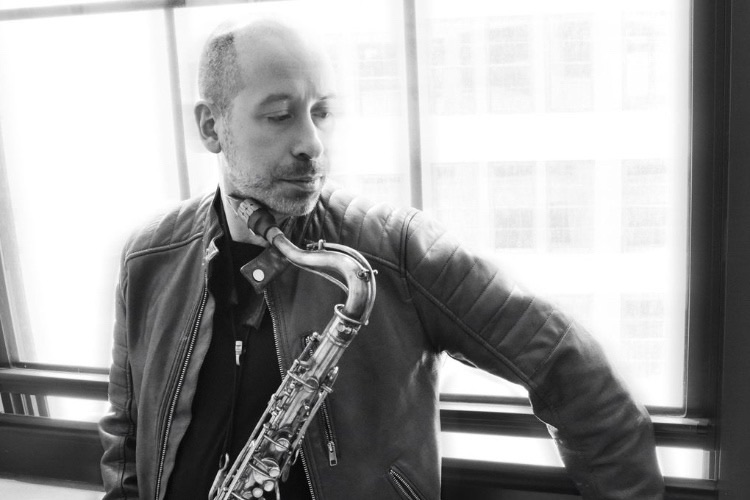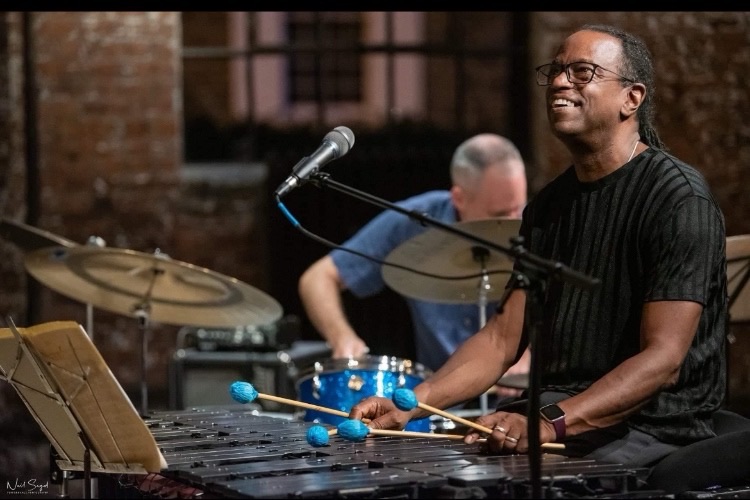Review: Terence Blanchard’s ‘Absence’ featuring the E-Collective and Turtle Island Quartet
|
Getting your Trinity Audio player ready...
|
Wayne Shorter is among the best composers of the second half of the Twentieth Century. Several of his compositions including, “Footprints” and “Infant Eyes,” have become standards. But in performing these songs, many musicians often miss what makes the saxophonist’s work so extraordinary. Yes, the pieces are beautiful and well-written, but they are merely jumping spots for exploration. Instead, the crux of his music is risk-taking; taking a bold leap, and seeing where you land. While most tributes miss this central point, Terence Blanchard’s Absence (Blue Note, 2021) featuring the Turtle Island Quartet and his band, the E-Collective, excels in capturing the meaning of the legendary artist’s work in its truest form.
In many ways, Blanchard is the perfect candidate for such a tribute to Shorter. Although two decades apart, both were Jazz Messengers, confirming their early career dedication to the form. From this experience, Shorter moved to Miles Davis’ Second Great Quintet, where his writing focused on expanding harmonic structures. One such piece, “Fall,” appears on Absence. While Blanchard’s version retains the same balladry of the original, the incorporation of strings adds additional complexity and texture. The lush tones of Fabian Almazan’s piano, the Turtle Island Quartet’s ever subtle movements, and Blanchard’s long tones suggest a crisp Autumn air, descending colored leaves, and the slight scent of firewood burning. It’s respectful of Shorter’s original but never aims for mere replication.
From 1970 until 1986, Shorter and Joe Zawinul experimented with merging influences from jazz, rock, funk, and R&B, and various cultural musics. A central focus of Weather Report’s albums is also their focus on using emerging technologies to create novel tones. The E-Collective stands in a unique position in addressing this amalgamation of sounds as it follows a similar path. Both Breathless (Blue Note, 2015) and Live (Blue Note, 2018) emerge from the space between rock and jazz while pulling from electric music developed in the decades since fusion’s heyday, like hip hop, heavy metal, and electronic music. As a band, the E-Collective is very modernistic and eclectic and, with things like its leader’s pedal-modified tone, also seeking new sounds. Unsurprisingly, the band makes the themes from Weather Report tunes their own. “When it Was Now” is turned from a jazz-funk exposition into a more nuanced interplay between trumpet and guitar. To better incorporate solos, Absence simultaneously grounds and stretches the concise alien melody of “The Elders.” It also reappears as “More Elders,” a wild version of which almost sounds like some chaotic remix.
The album also puts its own twist on Shorter’s recordings as a leader from the mid-1980s to the present. One example is “Diana,” born from the saxophonist’s work with Milton Nascimento on Native Dancer (Columbia, 1974). When Shorter revisited it on 1+1 (Verve, 1997), the song’s core melodic elements remained, but a change in presentation altered its meaning. While the original rendition is tender, smooth, and contemplative, the newer one is a bit more raw, sparse, and more loosely knit. This kaleidoscopic approach to music recurs through most of the last three decades of Shorter’s work, and Blanchard capitalizes on it. In his version, slow strings gently breeze past one another, suggesting the theme before actually doing so. Midway through, Blanchard’s core group adds to the aesthetic but with a slight edge. Minor modifications of Blanchard’s tone coupled with Charles Altura’s occasional guitar trills suggest that perhaps there is more behind the sheer beauty of the melody than is readily apparent.
This return to past ideas as a launching pad for new ones has served as a significant commonality across Shorter’s work during the current millennium. While he continued to write songs, some of his more expansive moments – whether joined by his longstanding quartet or a symphony orchestra – have often started with sounds more familiar to him before branching off. Often, these sonic voyages have navigated a throughway between “jazz” and “classical.” The confluence of these two styles has played a central role in the music from this era of Shorter’s career. Indeed, even now as he is unable to perform publicly, the eighty-seven-year-old’s attention is placed on the creation of his first opera, ‘Iphigenia.” Having produced several classical film scores and an opera, Blanchard is perfectly suited to present these matters. On Absence, these cues are most apparent on compositions penned not by Shorter but by Blanchard and his bandmates. Interestingly, the more the ensemble moves from his specific notes and motifs, the more their music represents the lessons that can be best learned from the master.
Consider, for instance, violinist David Balakrishnan’s “The Second Wave.” Intended to showcase the Turtle Island Quartet, it sounds more reminiscent of Yo-Yo Ma’s Goat Rodeo project than a Terence Blanchard album. Actually, there’s no trumpet on the track at all. And that bravery in pushing beyond expectations is what makes it one of the album’s finest songs. At certain points, there is an undeniable bluegrass or Appalachian string feel to it. In others, it seems to come from the Western European classical tradition. And, at times, it borrows thoughts from klezmer and Middle Eastern music. “The Second Wave” is unlike any other song on Absence. But, in its creator’s undeniable openness to following wherever the music leads him, it fits Shorter’s musical ethos.
Similarly, the bandleader’s “I Dare You” derives its title from one of Shorter’s well-cited statements that “[t]he word ‘jazz’ means to me, ‘I dare you. Let’s jump into the unknown!’” The track places a wailing, at times almost siren-like, trumpet over a heavy groove. The song is urgent and impulsive. Its most compelling moments come, however, in the blur of orchestral and rock vocabulary. Overpowered bows at times seamlessly blur with synthesizer and at others weaves in and out with the overt aggressiveness of guitar and bass. Sonically one wouldn’t think of Shorter, but again the forcing beyond boundaries makes his influence clear.
Ultimately, Absence is the type of tribute an artist of Wayne Shorter’s artistic fortitude deserves. One looking for mere rehash or emulation will not find it here. While in a broad sense tracking the overall trajectory of Shorter’s career thus far, this is done in a seemingly organic way. The classical and fusion cues serve as mere lifelines for artists venturing out into previously undiscovered musical territory. And, in this sense, even when not examining Shorter’s compositions, the combined ensemble ensures that the saxophonist’s presence is well felt. The only apparent absence is trepidation in voyaging into the sonic unknown.
Absence will be available on Blue Note Records on August 27, 2021.
Tracklist: 1. Absence; 2. The Elders; 3. Fall; 4. I Dare You (Intro); 5. I Dare You; 6. Envisioned Reflections (Intro); 7. Envisioned Reflections; 8. The Second Wave; 9. When It Was Now; 10. Dark Horse; 11. Diana; 12. More Elders
Personnel: Terence Blanchard (trumpet (1-3,5,7,9-12), synths (1-3,5,7, 9-12)), David Balakirshnan (violin (1-7,9-12)), Charles Altura (guitar (1-3,5,7, 9-12)), Benjamin von Gutzeit (viola (1-7,9-12)), Fabian Almazan (piano (1-3,5,7, 9-12), synths (1-3,5,7 9-12)), Gabe Terracciano (violin (1-7,9-12)), David Ginyard (bass (1-3,5,7,9-12), synths (1-3,5,7,9-12)), Malcom Parson (cello (1-7,9-12)), Oscar Seaton (drums (1-3,5,7,9-12)).



